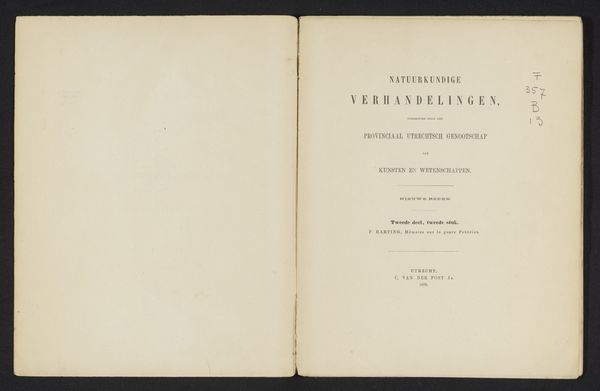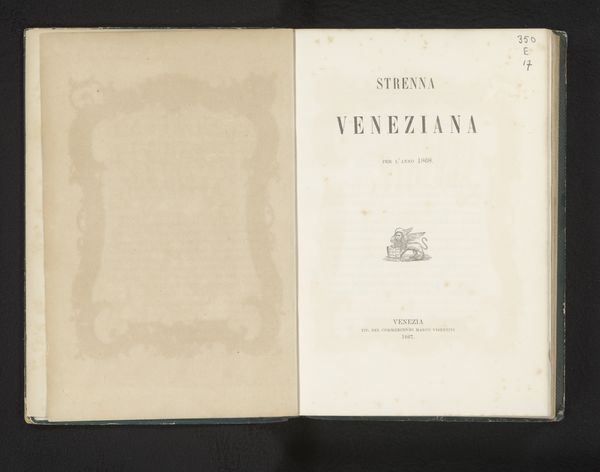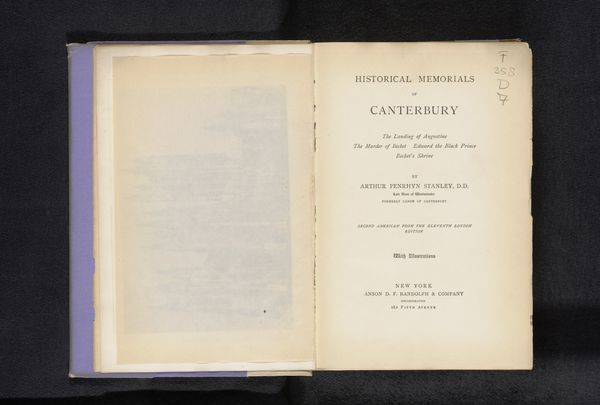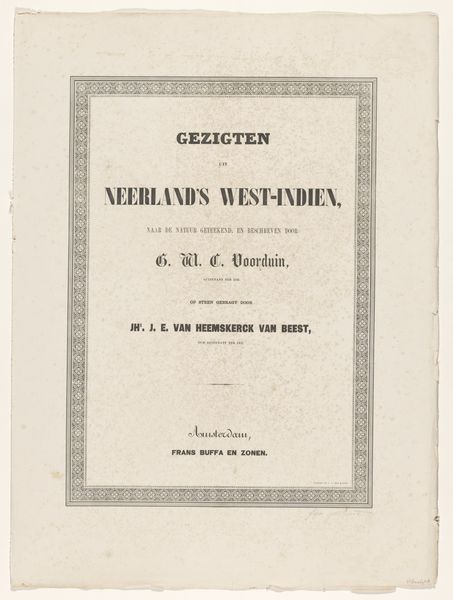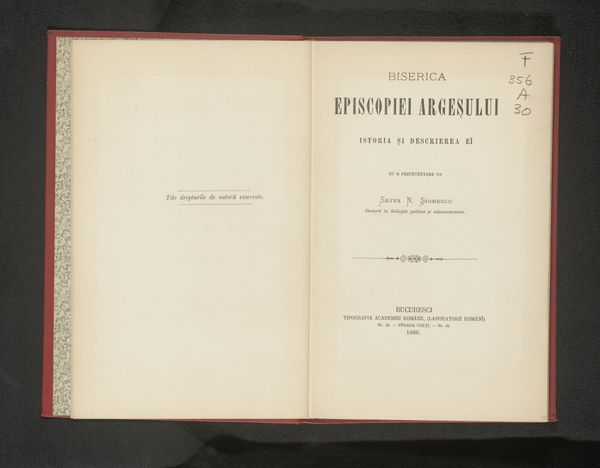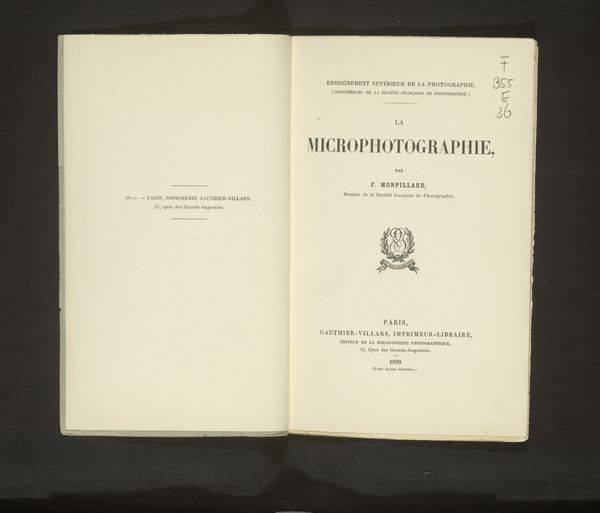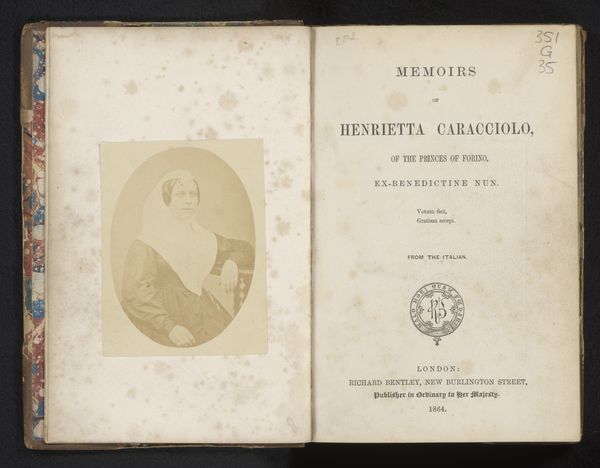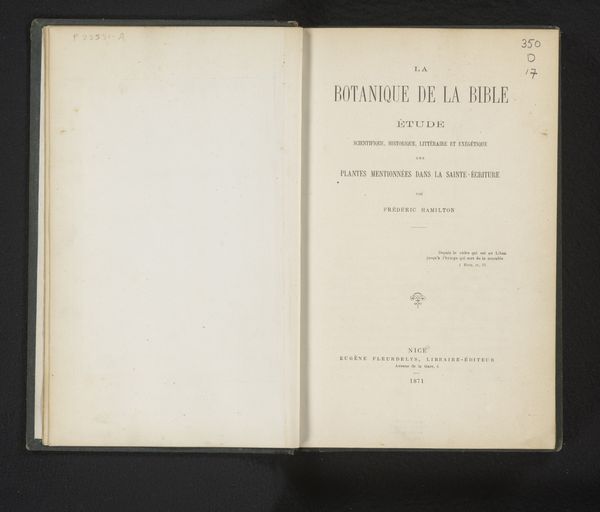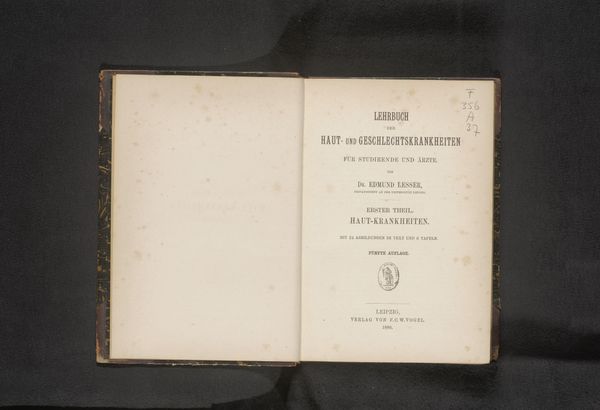
print, photography
#
script typeface
#
script typography
# print
#
hand drawn type
#
personal journal design
#
photography
#
hand-drawn typeface
#
thick font
#
handwritten font
#
delicate typography
#
classical type
#
thin font
Dimensions: height 208 mm, width 145 mm, thickness 44 mm
Copyright: Rijks Museum: Open Domain
Curator: This is the title page of "Hibernia Venatica," a book by M. O'Connor Morris, published in London in 1878. It's a fascinating object. Editor: It's quite stark, isn’t it? The simplicity of the typography gives it a severe, almost clinical feel, which is rather unsettling. I was expecting something more romantic given the title. Curator: "Hibernia Venatica" translates roughly to "Hunting Ireland," so that explains some of its austere nature. Hunting was a big social marker, part of maintaining the class system. Editor: Ah, so it carries a certain weight, a silent declaration of class. The typeface, while clean, hints at that. Look at the almost medieval quality in the letter forms. What associations would this evoke in the viewer? Curator: A sense of history, continuity, the perceived nobility of the landed gentry... It speaks of a cultural narrative deeply ingrained in the Irish psyche. "Hibernia," after all, is a classical name for Ireland, imbued with its own layers of symbolic meaning. The reference to hunting also has symbolic layers in cultural consciousness. Editor: Precisely. The book’s presence becomes an artifact of power and control presented during social discourse, right? How it functions. The photographs promised on the title page suggest a deliberate construction of a particular image of Ireland—rural, untamed, perhaps ripe for conquest and display for a certain elite group. Curator: Absolutely. The photographs and the chronicles included aren't merely documentary, they reinforce and perpetuate specific social and political narratives. Even the publisher's location, Piccadilly, would signal prestige and access to certain circles. Editor: It's more than just a book; it is a testament to a social moment. The act of its publishing solidifying an aesthetic choice that can reflect and shape broader political conditions. What do you find to be the greatest weight this piece holds in reflection? Curator: Its reminder that even seemingly benign cultural records like hunting narratives were, and continue to be, embedded with complex layers of historical power dynamics, expressed through simple imagery. Editor: It certainly gives a new perspective on landscape depiction! Thank you.
Comments
No comments
Be the first to comment and join the conversation on the ultimate creative platform.
